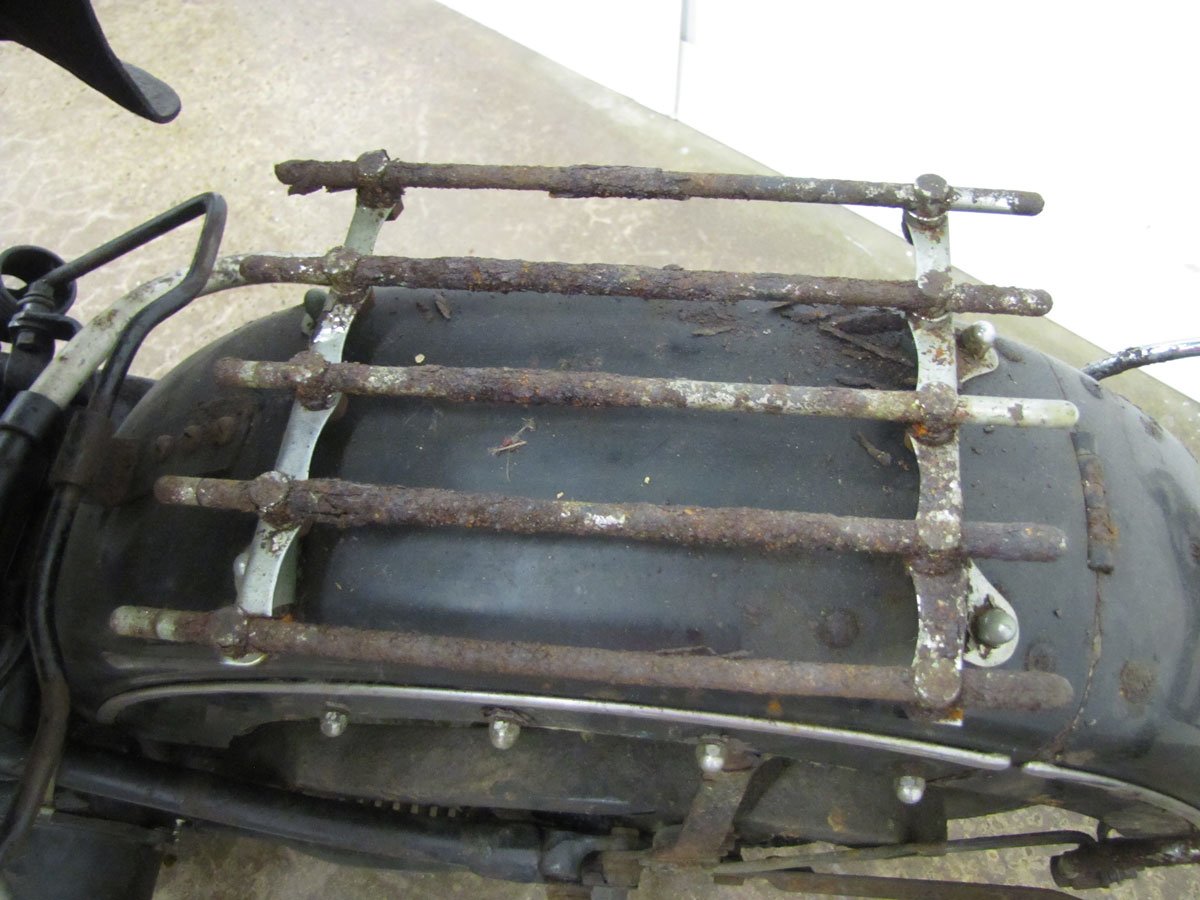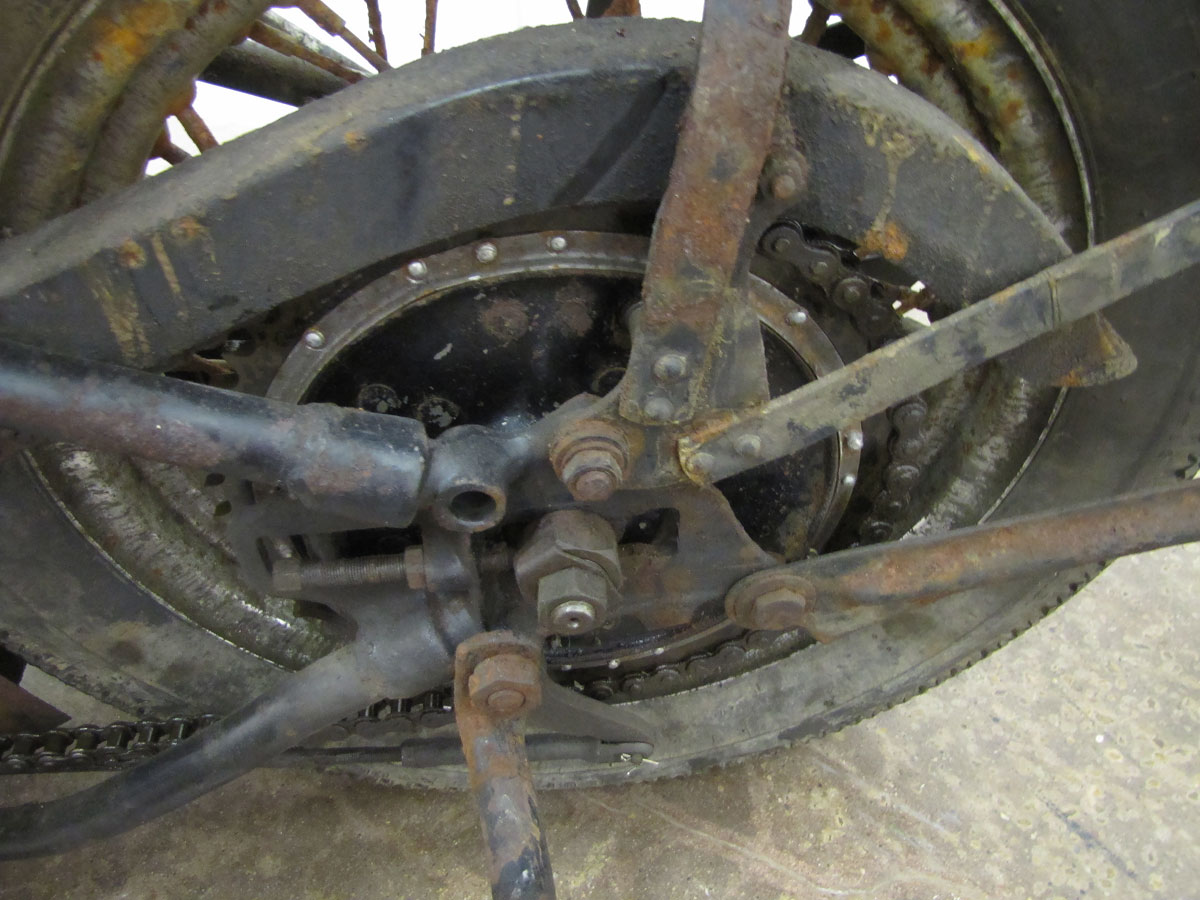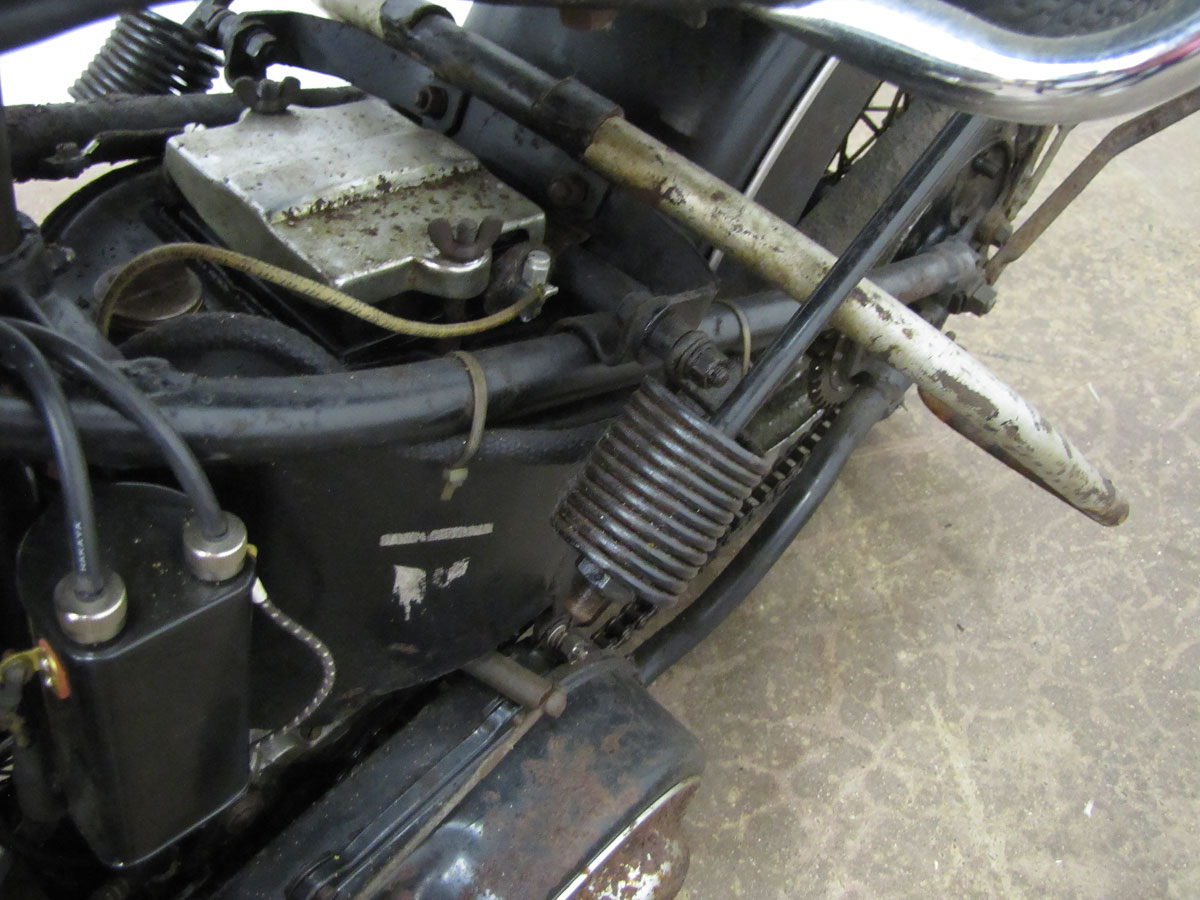
A few weeks ago the National Motorcycle Museum launched a new website. We hope you find it more useful for seeing what’s new at the Museum, going back and looking at past Featured Bikes, learning how you can be more involved and, of course, planning a trip to be here in person.
On the home page is a photo of the Barn Find exhibit, and that photo features a 1948 Harley-Davidson UL. While the Museum displays over 500 perfectly restored and excellent original condition motorcycles, this UL is rusty, crusty and oily, even a bit dusty. In fact not long ago it was pulled from a damp basement and found to be original, never repainted. As you can see it’s got some great period accessories. But it runs much better than it looks. Though we lost our friend and master Harley mechanic Jim Long in 2016, Jim gave the bike a mechanical rebuild as one of his final projects. But owner John Parham asked Jim to leave the outside of the engine, hubs, tanks and such in their natural barn fresh state.
Released late in 1935, the UL was Harley’s 74 and 80 cubic inch model designed for police departments, over the road touring and sidecar duty. 1948 was its last production year. The general design of the chassis and sheet metal is similar for Harleys of the era with big changes coming in 1949 with the OHV Hydra-Glide EL and FL and New Modern Age styling.
So what did the manufacturing landscape look like for Harley-Davidson just a few years after Victory in Europe day, or VE-Day? After providing almost 90,000 motorcycles to the War effort, Harley-Davidson was back in full swing with their domestic lineup. This included the carried over the OHV “Knucklehead” through 1947, flathead big twins and the trusty 45. The War Reparations Act brought Harley rights to make a machine based on the German DKW, and the popular 125 Model S was the result. In a few years Harley would release the lightweight unit construction, foot shift K model, a 45 cubic inch machine, their first with rear suspension.
When you visit the National Motorcycle Museum, you can take in over 60 Harleys from a 1908 “Strap Tank” to a 100th Anniversary CVO Road King plus a huge collection of Harley-Davidson signage, original package parts and promotional materials.
Specifications:
- Engine: 45 Degree V-Twin
- Type: Side-Valve, Air-Cooled
- Displacement: 74 Cubic Inches/ 1200 cc’s
- Bore & Stroke: 3.31” x 4.25”
- Compression Ratio: 5.5: 1
- Horsepower: 34
- Carburetion: 1.25″ Linkert
- Primary: Duplex Chain
- Transmission: 4-Speed, Hand Shift
- Final Drive: Chain
- Brakes: Drum, Front & Rear
- Electrics: 6 Volt Battery, Coil & Points
- Frame: Steel / Double Down Tubes
- Fork: Leading Link Springer
- Rear: Rigid, Sprung Seat
- Wheels/Tires: 5.00” x 16” / 5.00″ x 16″
- Wheelbase: 59.5 Inches
- Weight: 565 Pounds
- Top Speed: 85mph
Leave a Reply
Want to join the discussion?Feel free to contribute!



































I would ride it just as is in full Glory
Looks pretty crude to us now, but back in the day it was state of the art. One of my riding buddy’s mom and dad rode one just like it from StLouis to Mexico on their honeymoon.
Was the engine same technology as the 45 flathead?
Great barn find and glad you left its appearance as found. I hope to see it in person this Spring or Summer! Maybe you could park it outside in the sun during your Vintage Rally for all to see? Thanks for sharing these photos.
To Rob Roth,
Yes, UL and WL designs were quite similar. But both over time saw some changes to the engine and subtle differences in frame design for strength, etc. But these are classic rigid Harleys, and a good number from the era are on display including a 1949 45 that came in on loan just 10 days ago.
Mark
National Motorcycle Museum
I am a proud owner of UL1068 also in black. Does anybody know how many 1948 UL’s were produced?
my ul is # 1098
Something to see!! So many memories! HD and Pops !! Remembering the 60ds -70ds thru today
I believe I read this right Jim long restore this motorcycle??? He is a great guy and he know a lot about harleys …
HI, I always thought the rear UL Springer legs were a different design. being like a tapered I beam style instead of the WLA tapered oval style? Please correct me if I’m wrong. Regards. Jim